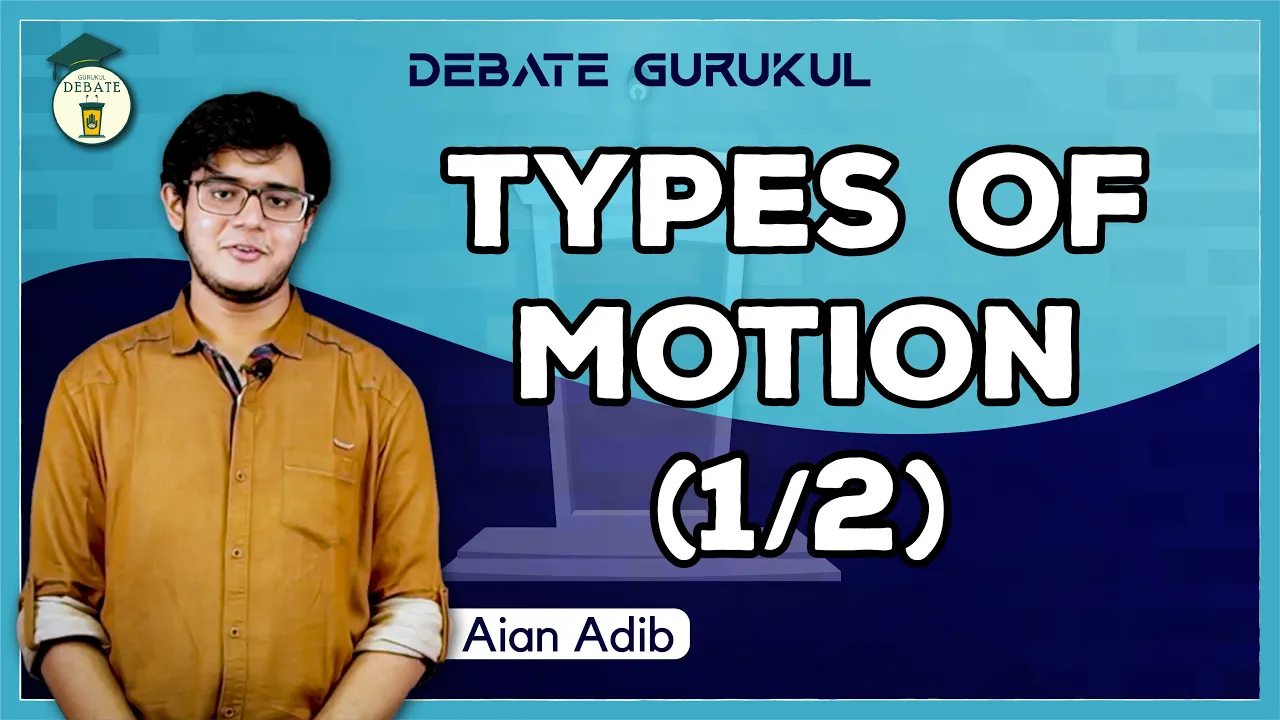Types of Motion by English Debate Gurukul. “Types of Motion” is the topic of today’s video. We are currently publishing a series called “Introduction to English Debating”. “Types of Motion” is the 12th class of our new series “Introduction to English Debating”. In this series, you will get to know all about English Debating.
Types of Motion
This week, the DDS had a look at different types of motions you may find in your debating career. Motions, otherwise referred to as topics, set up what a debate is about. Knowing what types of motions are out there is important because every topic places a different burden on each team, and demands a different direction.
For those of you who couldn’t make our meeting yesterday, here are the types of motions you can expect.

Model Debates:
This house believes that….
Model debates are the most common type of debate. It posits whether or not we should make a certain change. This involves debaters identifying the problem in the debate, as well as analyzing to what extent the solutions offered in the debate solve that problem.
Model debates usually also involve a Model, which outlines how you would implement that change.
Example: This house would impose an inheritance tax.
Actor Debates
This house, as X, would Y.
In Actor debates, you are operating through the perspective and interest of an Actor. This means debaters need to set out the needs, interests, and motivators of that Actor, and conclude whether doing Y aligns with those needs, interests, and motivations.
Example: This house, as feminists, would use nudity as a form of protest.
Non-Actor Debates
This house believes X should do Y
In Non-Actor debates, you are looking at the debate on a larger scale. So instead of debating the needs of the Actor, you would analyze whether X doing Y is better for the good of society.
Example: This house believes Spain should grant independence to Catalonia.
Regret/Support Debates
This house regrets X OR This house supports X
These debates require you to prove why it is valid to regret or support the X. They don’t require a model.
With a regret motion, you would want to show whether the status quo is materially worse than the world before X happened.
With a support motion, you would want to show whether the status quo is materially better because X happened.
Example: This house regrets the rise of cancel culture.
Types of Motion Details :
Read more:

